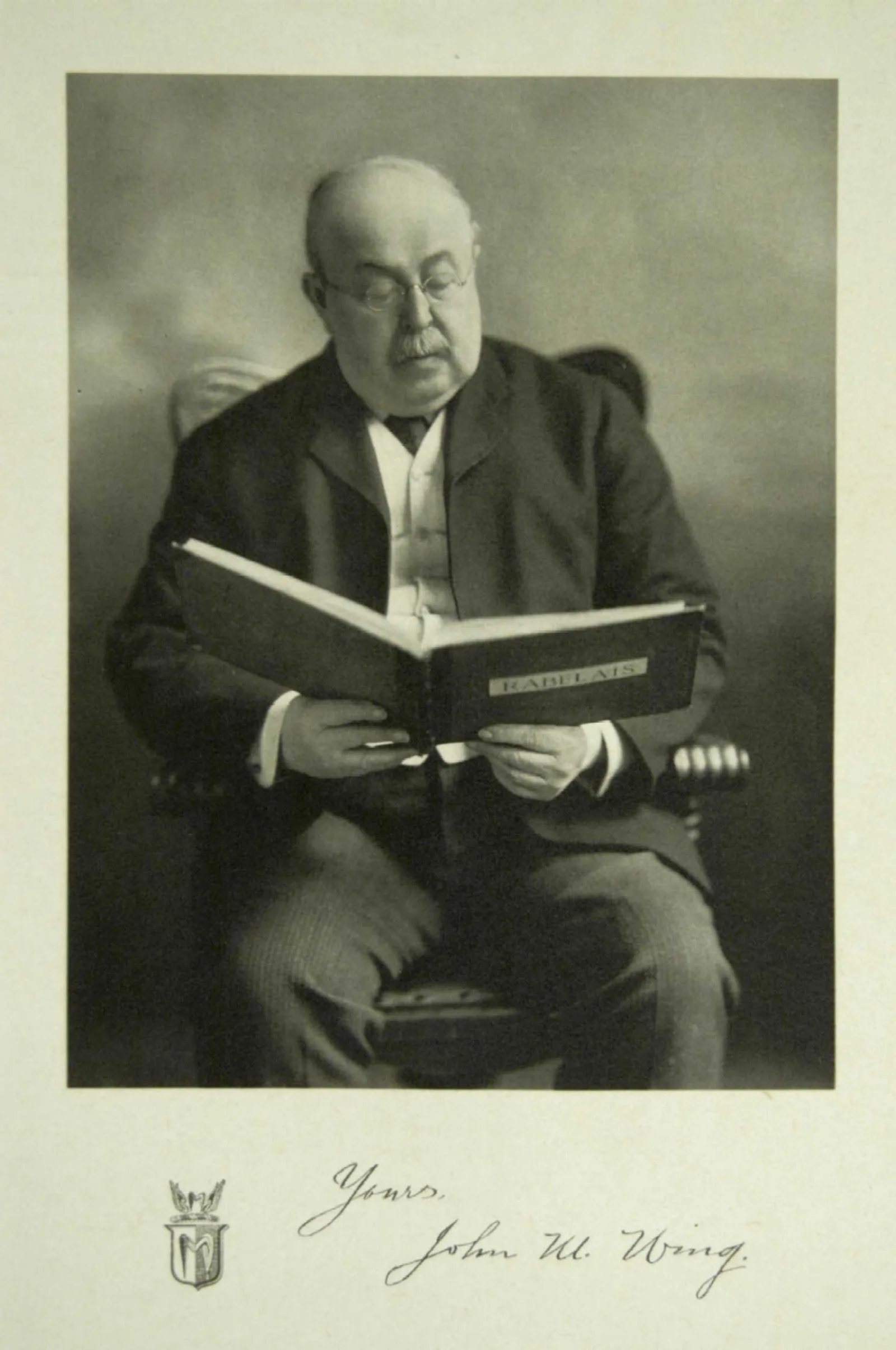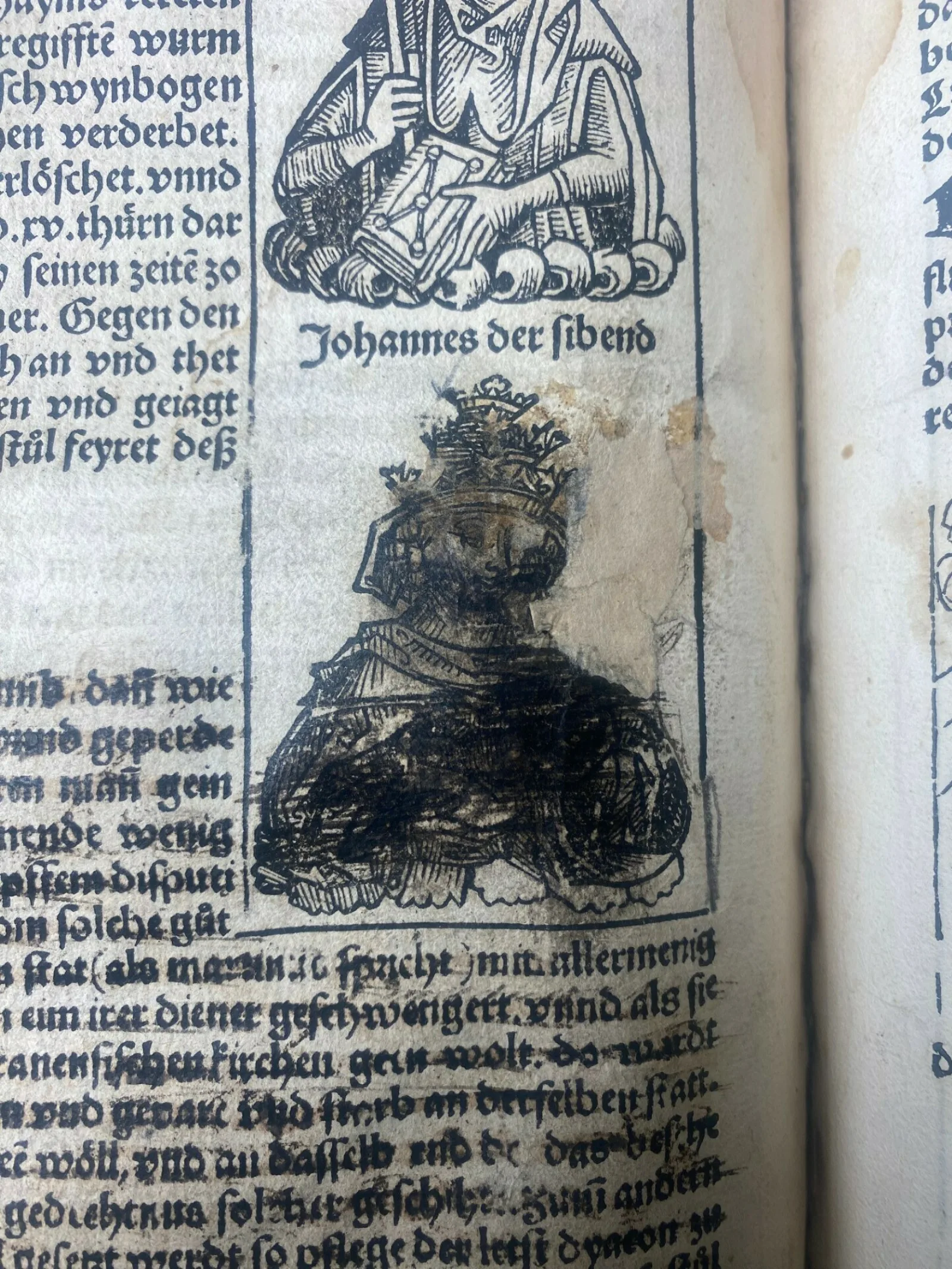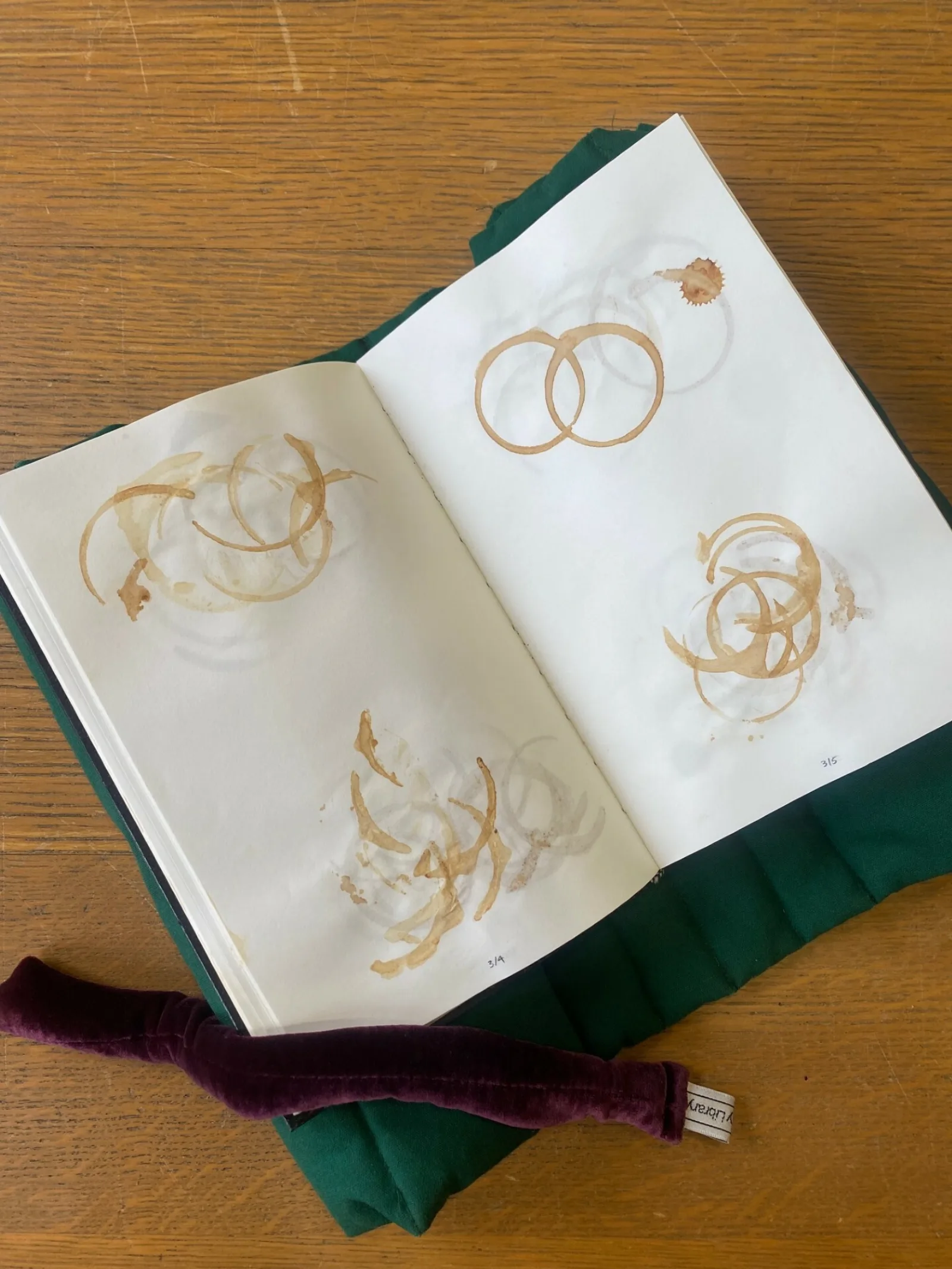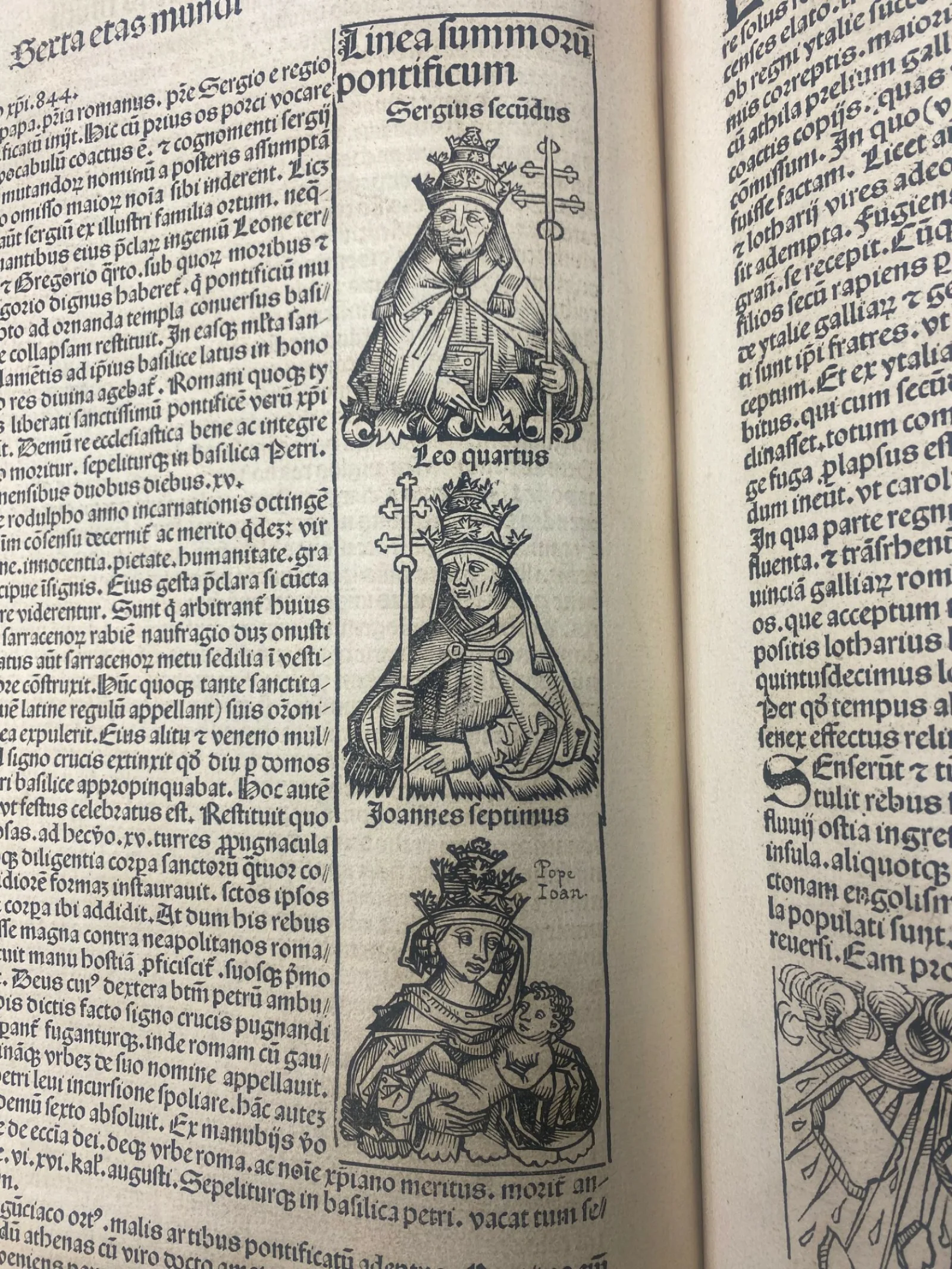In honor of Pride month, we asked our curators to highlight items in the collections that illuminate facets of the LGBTQIA+ experience. Whether from the recent past or the twelfth century, queer history is vast, complex and storied. The Newberry is excited to share just a taste of all the queer history our collections have to offer.
John M. Wing: Bachelor & Beau
Jill Gage - Custodian of the John M. Wing Foundation on the History of Printing and Bibliographer of British Literature and History
John M. Wing (1844-1917), benefactor of the Newberry’s Wing Foundation on the History of Printing, spent the last 30 years of his life making extra-illustrated books (essentially customizing books by adding hundreds of illustrations taken from elsewhere). Wing’s extra-illustrated books formed the basis of my library school thesis, and I came to know and love Wing as an eccentric curmudgeon who hated 19th-century books, religion, Americana, any club that would have him as a member, women wearing pants, and change in general; but who loved old English and French books and general weirdness. He was particularly fascinated by the worship of Priapus.
Wing often added cryptic, quasi-biographical notes to his extra-illustrated books, remarking, for example, in his copy of The Life of Beau Brummell that Wing had been “a Beau in his younger days, who wore velvet, silk and fine linen, diamond jewels and buttons of malachite, trod on French patent leather, with duplicate watches in his fobs to keep the fashion and regulate the sun withal; but who later in life was cured of this macaronic folly by his love for literature, and now patronizes print-sellers, publishers and book-men, to the regret of jewelers, tailors and haberdashers.” Notably, he referred to himself on multiple occasions as “a bachelor” and in one book, he declared: “This Book was Extra Illustrated by John M. Wing, bachelor by the Grace of God.” Indeed, Wing never married, but also never explicitly self-identified as gay. Yet, while the extra-illustrated books are filled with celebrations of bachelorhood, the diaries he kept from ages 13 to 22 are filled romantic attachments to other young men, whom he often called his “chummy chums.”
While Wing’s diaries are often as maddeningly cryptic as his extra-illustrated books and his bed-sharing adventures with his schoolfellows might be read in different ways (i.e. they were not necessarily always sexual), they nevertheless offer fascinating insights into a young man’s unselfconscious pursuance of same-sex relationships in mid-19th-century America.

Pope Joan: The Most Dramatic Gender Reveal of All Time?
Dr. Suzanne Karr Schmidt – George Amos Poole III Curator of Rare Books and Manuscripts
A woman of true mystery, Pope Joan (aka John the Seventh) was said to have succeeded in concealing her sex, but not her brilliance. Using her wits, knowledge of scripture, and clerical vestments, she supposedly scaled the ranks of the Catholic Church to succeed Leo the Fourth (d. 855). She appears just after him in a series of portrait woodcuts in the 1493 Nuremberg Chronicle, an encyclopedic history book that was one of the most extensive and expensive publications of its time. Her woodcut and story, however, bear witness to the dangers of identifying and, even worse, passing as male. While her name is listed as Johannes or Joannes (John) in the German and Latin editions of this book, she is nearly always shown with the agent of her undoing: the baby in her arms.
She is supposed to have been secretly pregnant, and to have given birth (and died) in the middle of a procession in Rome! While some copies of the book remain untouched, many were annotated, as with the matter-of-fact English translation of her name seen here. Other zealous, and likely Catholic, readers went further and crossed out the accompanying text or the image with greater enthusiasm. Some went even further, as in a German language edition at the Newberry, where the child was scribbled over violently. When its head was still too apparent, the reader attacked the page itself, cutting all the way through in their attempt at removing the evidence of Joan's femininity.

Miller & Shellabarger
Will Hansen - Roger and Julie Baskes Vice President for Collections and Library Services, and Curator of Americana
The Chicago art team and married couple Dutes Miller (b. 1965) and Stan Shellabarger (b. 1986) (referred to as Miller & Shellabarger) have for years kept a record of "the daily ritual of sharing coffee." They use the pages of a blank commercially-produced journal or sketchbook as a coaster for their morning coffee cups, one page per day, with no additional text commentary or imagery: the stains and rings of the cups are their own record of each day.
With no further context, the book is fascinating to me as an artistic document—the patterns on each page are mundane, but they also insist on the beauty and variety of the everyday. It is also a wonderful book for thinking with the Newberry's collections: what makes a book a book, and what makes a book a book worth making? Are coffee cup rings a form of printing? However, there is much more context to deepen the interest in this deceptively simple object. Miller & Shellbarger refer to their work as documenting "the rhythms of human relationships, speaking both to common experiences of intimacy as well as the specifics of queer identities." The Newberry holds the "Coffee Book" recording the morning coffees of January 25 through August 30, 2020. Miller & Shellabarger's shared coffees persist through the onset of the COVID-19 pandemic and the subsequent lockdowns, the murder of George Floyd and the protests that followed, and the buildup toward the 2020 presidential election.
I find it surprisingly powerful to turn the pages of this book, knowing that context. The intimacy, love, and simple survival expressed in the coffee rings on each page might remind us not only COVID, but of the AIDS crisis; the seemingly meaningless marks on each page can be reminders of both the privilege and the terror of being human, and conscious, and alive.

This story is part of the Newberry’s Donor Digest, Summer 2024. In this newsletter, we share with donors exciting stories of the work made possible by their generosity. Learn more about supporting the library and its programs.
